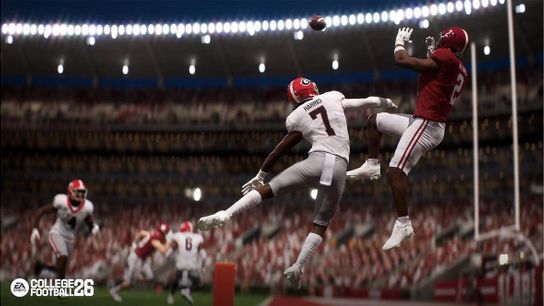The long-awaited approval of the House settlement late Friday night is supposed to make it more difficult for individuals to affect the NIL market. Moving forward, players will be paid through highly-regulated revenue share payments directly from their schools, and third-party-approved NIL payments for "legitimate" business purposes. But if every single gamer gets together and decides to play EA Sports College Football 26 exclusively as the Akron Zips, together they can potentially tip the balance of power in the Mid-American Conference.
That's according to documents obtained by the website cllct, who's reporting that EA has found a new way to compensate schools for appearing in the game.
In short, schools will receive royalty payments for how often users play as them within the game. From the documents:
“For each CFB product released by EA SPORTS, we (CLC Learfield) will provide a percentage for each institution based on the games played for that institution as a percentage of the total games played across all institutions. This percentage of games played will become the final allocation percentage for each school that will be applied to the total gross royalties for all institutions received.”
Now, we have lots of questions:
1) How much money is set aside in this fund?
2) How is EA calculating what percentage of total revenue goes into this fund? Typically, royalties are derived from a percentage of overall sales -- i.e., if I sell 100 Albert the Gator keychains for $5 apiece, the University of Florida would get 10 percent of that $500. But EA gets its money when people buy the game, not when they play it.
3) Does this royalty fund last forever? Are schools going to be getting checks in 2031 for how often they're being played in College Football 26?
College Football 25 needed only five months to become the best-selling sports video game of all-time, and it was streamed a reported 1.7 billion times. It's unlikely the sequel will duplicate those numbers given the decade-plus wait for College Football 25, but 26 will still be a widely-selling game.
The new royalty structure replaces the previous edition, where EA Sports slotted teams into tiers based on how often they appeared in the year-end AP Top 25 over the previous decade. The 13 schools who made it into Tier 1 received nearly $100,000 in royalties apiece, while the 54 schools in Tier 4 netted around $10,000.
All 136 FBS schools opted into EA's new pay-for-play royalty structure, so clearly they believe this system has more in it for them.
The players will also see higher checks for appearing in 26 vs. 25. Each player received a $600 check and a free copy of the game for appearing in College Football 25, but in 26 they'll receive between $1,500 and $3,000 apiece.
